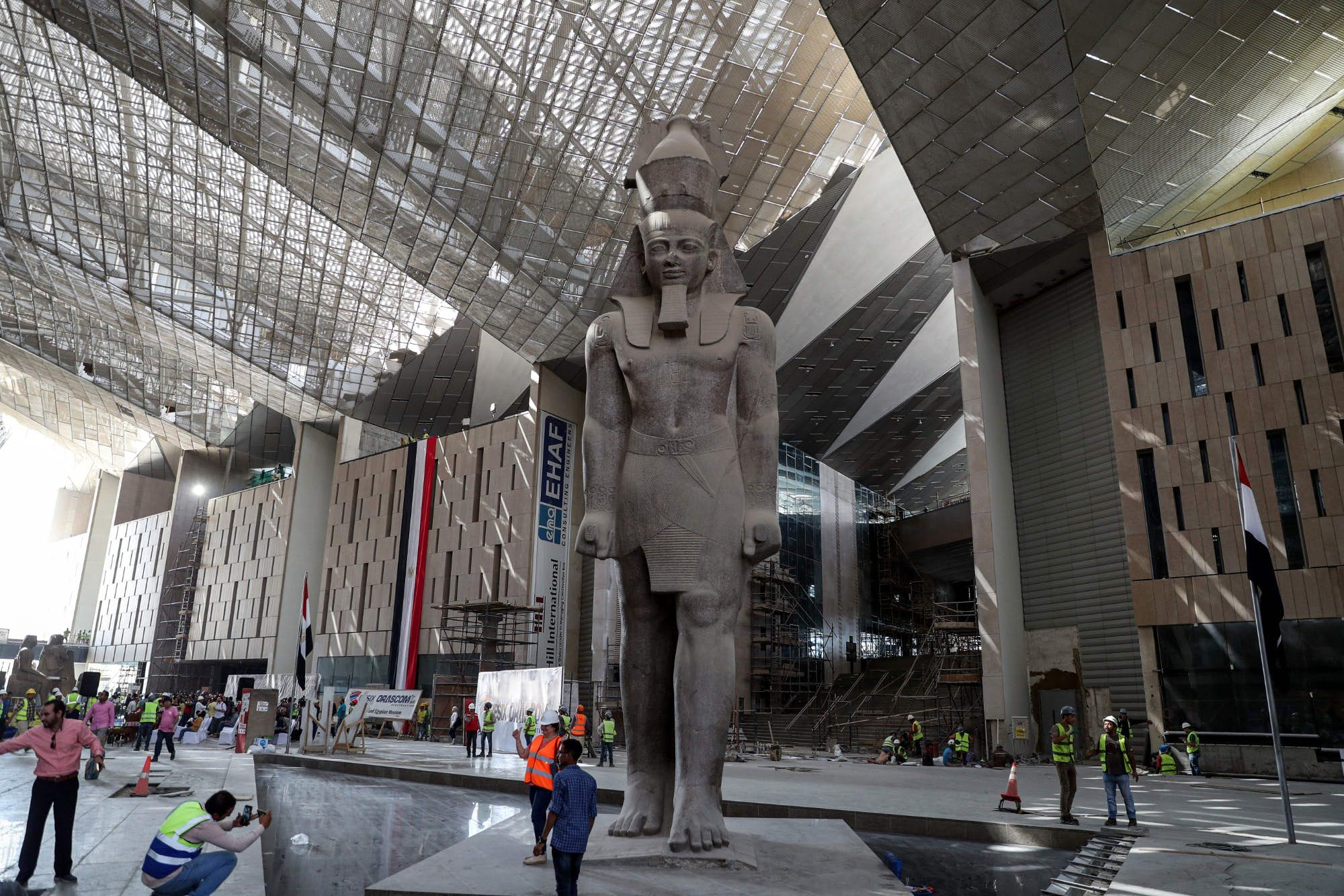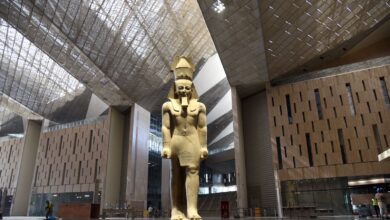
Those who visited the Grand Egyptian Museum (GEM) before its official opening on November 1st found the statue of Ramesses II awaiting them at the entrance.
So captivating was the statue’s majestic stance, and so immense the history of its long-reigning owner, that hardly anyone who visited realized the important story that lies behind the statue’s presence in that exact spot—and it is a story that must be told.
As the world watches the official opening ceremony with rapt attention on Saturday evening, they should also know a part of this narrative.
While the museum itself holds countless fascinating tales, the story of the statue’s relocation is certainly one of the most thrilling.
In 2006, the government decided to move Ramesses II from its longtime location in Ramses Square to the Giza Pyramids plateau, near the museum site.
The Arab Contractors company undertook the massive task, led by Engineer Ibrahim Mahlab.
When President Mubarak asked him if he could accomplish such a monumental feat, Mahlab replied: “Yes… God willing, I can.”
And he succeeded.
Of course, the artist Farouk Hosny, the Minister responsible at the time, was present for every detail, as the concept for the GEM was fundamentally his idea—a story in itself.
I recall vividly how television screens raced to broadcast every detail of the operation and how people worldwide watched intensely. I also remember how many Egyptians stayed up that night, following the journey step-by-step, from Ramses Square to the Giza plateau.
To truly grasp the magnitude of this achievement, which should never be forgotten, one must know that preparations alone took one year and two months!
Every centimeter of the route the statue would travel had to be meticulously studied.
Extensive surveys of the statue, the site, and the road were required, followed by complex calculations—addition, subtraction, and multiplication—to safely manage a statue weighing 81 tons, not including its pedestal, which weighed even more.
The history of Ramesses II fueled the global media frenzy that accompanied the move. The man lived in the 14th century BC and was described among the Pharaohs as their Great Ancestor.
He was famous among ancient Egyptian kings for never having been defeated in any battle he entered, being the hero of the famous Battle of Kadesh.
It was after this battle that he signed a peace treaty with the Hittites in the region of modern-day Levant, a treaty that remains the oldest of its kind in recorded history.
He was a monarch beyond compare, and this remains a source of pride for every Egyptian. The flawless success of the relocation is still credited to the Arab Contractors, the dedicated team that executed the operation, and Mahlab who led it.
If there is a lesson here, it is this: Egypt can achieve anything when it sets its mind to it, and we, as Egyptians, can achieve great things when we apply determination and love to our work.
Author’s biography
Soliman Gouda is a prominent figure in Egyptian journalism, known for his leadership roles and insightful commentary.
He previously served as the Editor-in-Chief of Al-Wafd newspaper and currently writes columns for Al-Masry Al-Youm.
Beyond his journalistic output, Gouda is highly regarded in the professional community, evidenced by his role as a Member of the Arbitration Panel for the Bahrain Journalism Award. A recognized writer, he wrote seven books and is the recipient of five journalism awards, including the Ahmed Amin award.




